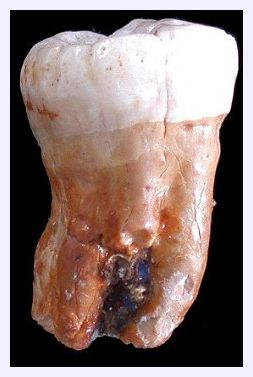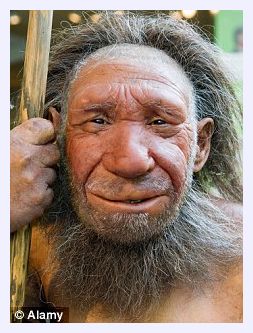
For years it was believed the Neanderthals were carnivores who devoured meat.
But new research has found not only did our primitive ancestors eat a lot of greens, they were able to cook them as well.
It was widely believed that the limited meat-only diet of Neanderthals and their lack of cooking skills contributed to their extinction.
Their rivals Homo Sapiens, our direct ancestors, who lived alongside them were more adaptable as they had a wider variety of food sources to choose from.
But a microcscopic analysis of the fossilised teeth of Neanderthals reveals their diet was more varied than previously thought - with their vegetable intake including beans, roots and tubers and palm dates.
The evidence, from cave sites in Iraq and Belgium, also suggests Neanderthals controlled fire in much the same way as Homo Sapiens.
Many of the plant remains had undergone physical changes that make scientists believe they were cooked before they were eaten.
Researchers are still trying to identify remains of other plants on the teeth.
Writing in the journal Proceedings of the National Academy of Sciences, the researchers led by Dr Dolores Piperno, from the Smithsonian National Museum of Natural History in Washington DC, said: 'Our results indicate that. Neanderthals made use of the diverse plant foods available in their local environment and transformed them into more easily digestible foodstuffs, in part through cooking them, suggesting an overall sophistication in Neanderthal dietary regimes.'
Previous research has found that Neanderthals living on Gibraltar ate meat including deer, wild boar, bear and even tortoise.
They were also keen on seafood when it was in season, including dolphins, seals and shellfish.

Earlier this week, scientists revealed a new variety of humans called Denisovans lived alongside Homo Sapiens and Neanderthals.
The cavemen were identified from DNA taken from a tooth and finger bone found in a cave in Siberia.
It was found in the Denisova cave in the Altai Mountains in southern Siberia in 2008 alongside ornaments and jewellery.
Provisional tests published earlier this year suggested that the remains belonged to an entirely new species.
The Denisovans were physically different from the thickset Neanderthals and modern humans, although they also walked upright.



Reader Comments
to our Newsletter